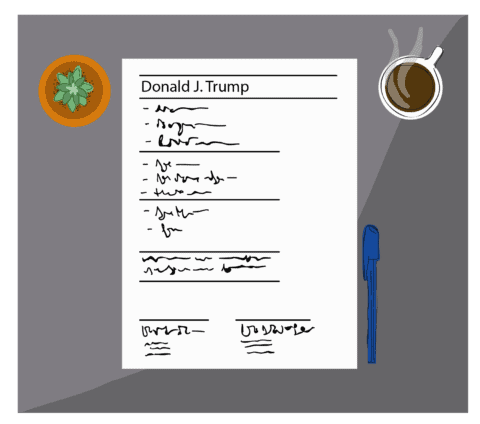Although resumes are vital to the job searching process, no one really enjoys writing them. However, having a great resume will help set you apart from the other candidates.
Before we continue on to the necessities of resume building, keep in mind that no one format for resumes exists. There are multiple ways of writing them and some ways are better for some people than others.
The guide I will be following belongs to the Student Employment and Career Centre here at the University of Saskatchewan.
Based on your strengths and past experiences, the first step is to decide what kind of resumé is best for you. If past employment is your selling feature, then a chronological resume is the way to go. Maybe you have the skills for the job but not necessarily the formal experience — in this case, a functional resume would be  best. Perhaps you have both the experience and skills for the job, so you will want to use a combination resume.
best. Perhaps you have both the experience and skills for the job, so you will want to use a combination resume.
As Christine Gregoire — the former governor of Washington — once said: “Education is the foundation upon which we build our future.” With that in mind, your education is usually the first section of your resume — with the exception of the chronological resumé, where it is your second.
In this section, make sure you highlight your degree and not the institution. If a potential employer is skimming your resume, it is crucial that they know what you’ve studied, not where. Secondly, don’t use the term “bachelor’s degree” until you’ve graduated. For example, instead write “College of Arts and Science — psychology,” opposed to “bachelors of psychology.”
Skills aren’t just things you learn at your place of employment, they are also obtained through volunteering and your education. If you are writing a chronological resume, you’ll want a smaller skills section called “Highlights of Qualifications.” This is a section of five statements that attest to your experience, academic background, personality and how they will relate to the position you’re applying for.
For functional and combination resumes, your skill section should be called “Summary of Skills.” For this, you will want at least two subheadings of skills that are relevant to you. Each subheading should have about four to five points underneath it and if your formal experience is slightly lacking, I’d recommend putting a subheading revolving around your degree.
For these categories, it would be beneficial to write each skill using the Action-Skill-How formula. An example of this would be, “Developed written, oral and listening communication skills through various academic group projects.”
At times it can be tricky to know what work experience to put on your resumé and which to leave out. When debating this, always consider its relevance.
Relevant work experiences are great to have on your resume and can help you stand out. Depending on your situation, you can break up your work experiences into two sections — related work experiences and supplementary work experiences.
When writing your work experiences, make sure you have about three good points with qualitative and quantitative details describing your experience. Stay away from short choppy sentences such as, “Worked the till.” Instead try lines such as, “Operated cash register while serving customers in a friendly environment.”
Other sections to include in your resume include volunteering, awards, interests and memberships. These sections tend to be much shorter than others but are also of great value.
In regards to references, family members are not a great idea. Instead, choose former employers, volunteer supervisors, professors or others who can positively attest to your skills and/or experience.
Finally, remember that your resume is a professional document so stay clear of coloured fonts and fancy scripts. As well, the person reading your resumé does not want to read a 10-page essay — keep your resumé to two pages with references on a third.
With all these tips, you should be well on your way to having a great resume. For more help, make an appointment at the SECC or visit their online Resume Guide.
—
Kezia Fourie
Graphic: Lesia Karalash / Graphics Editor